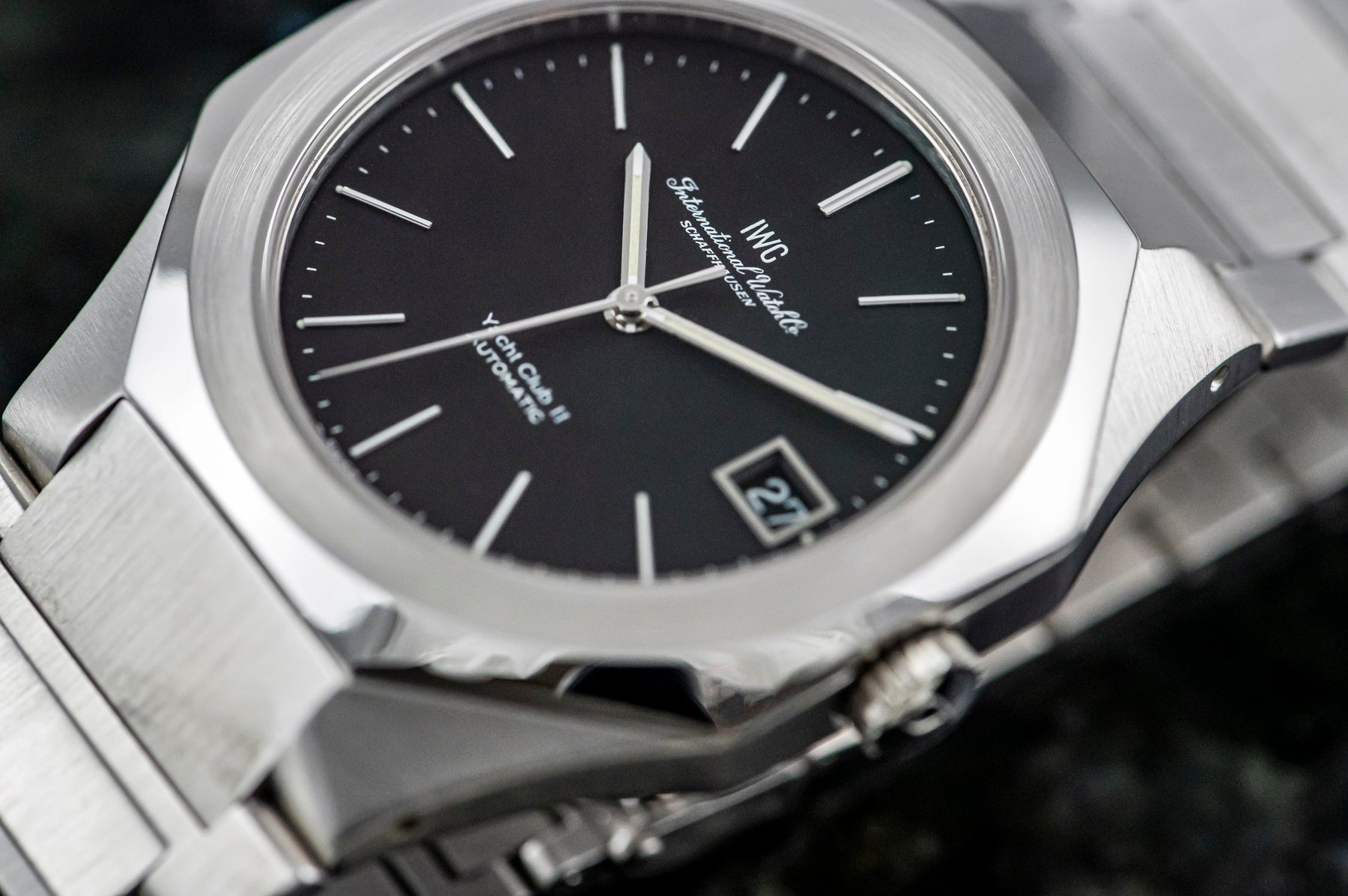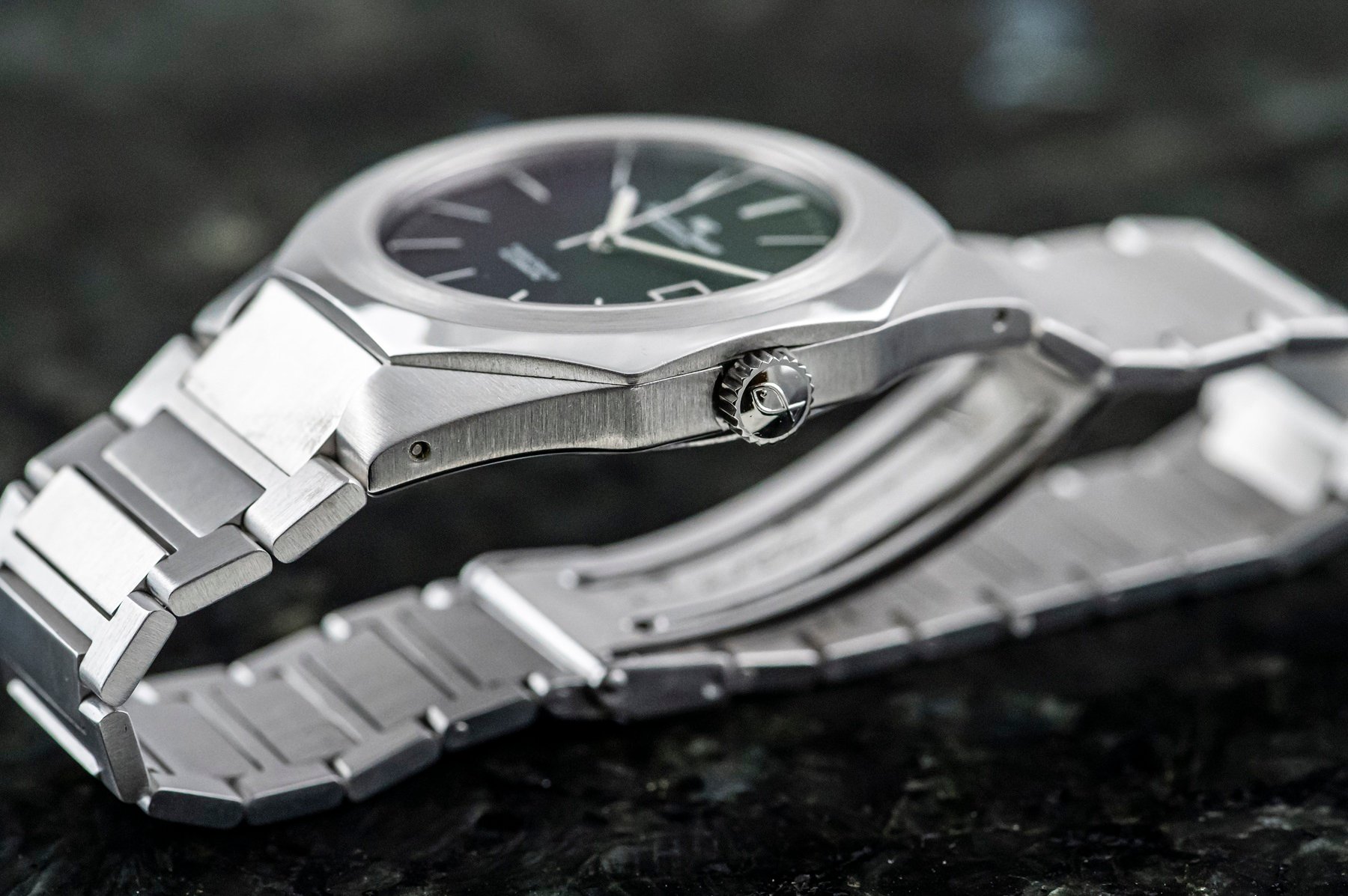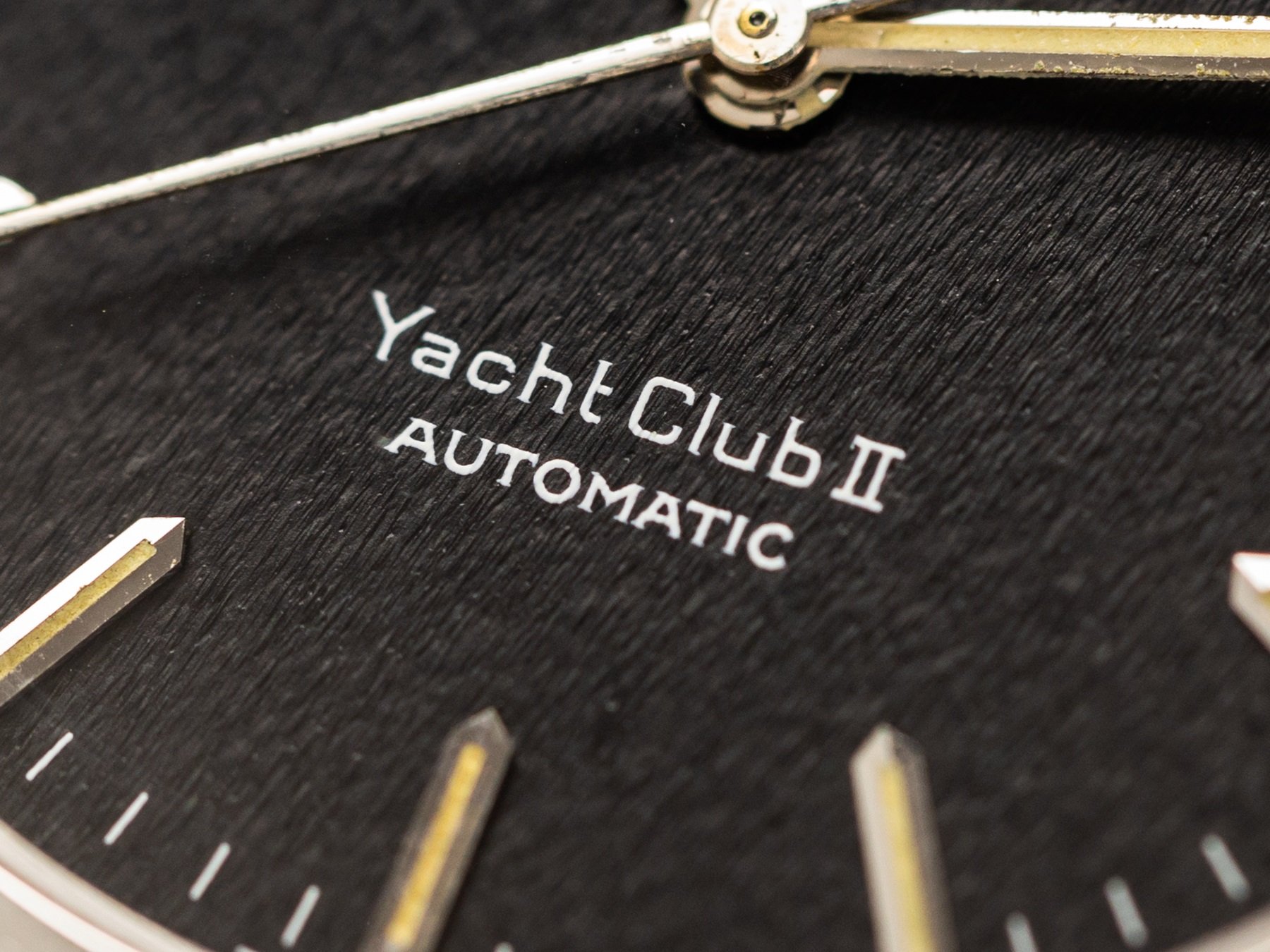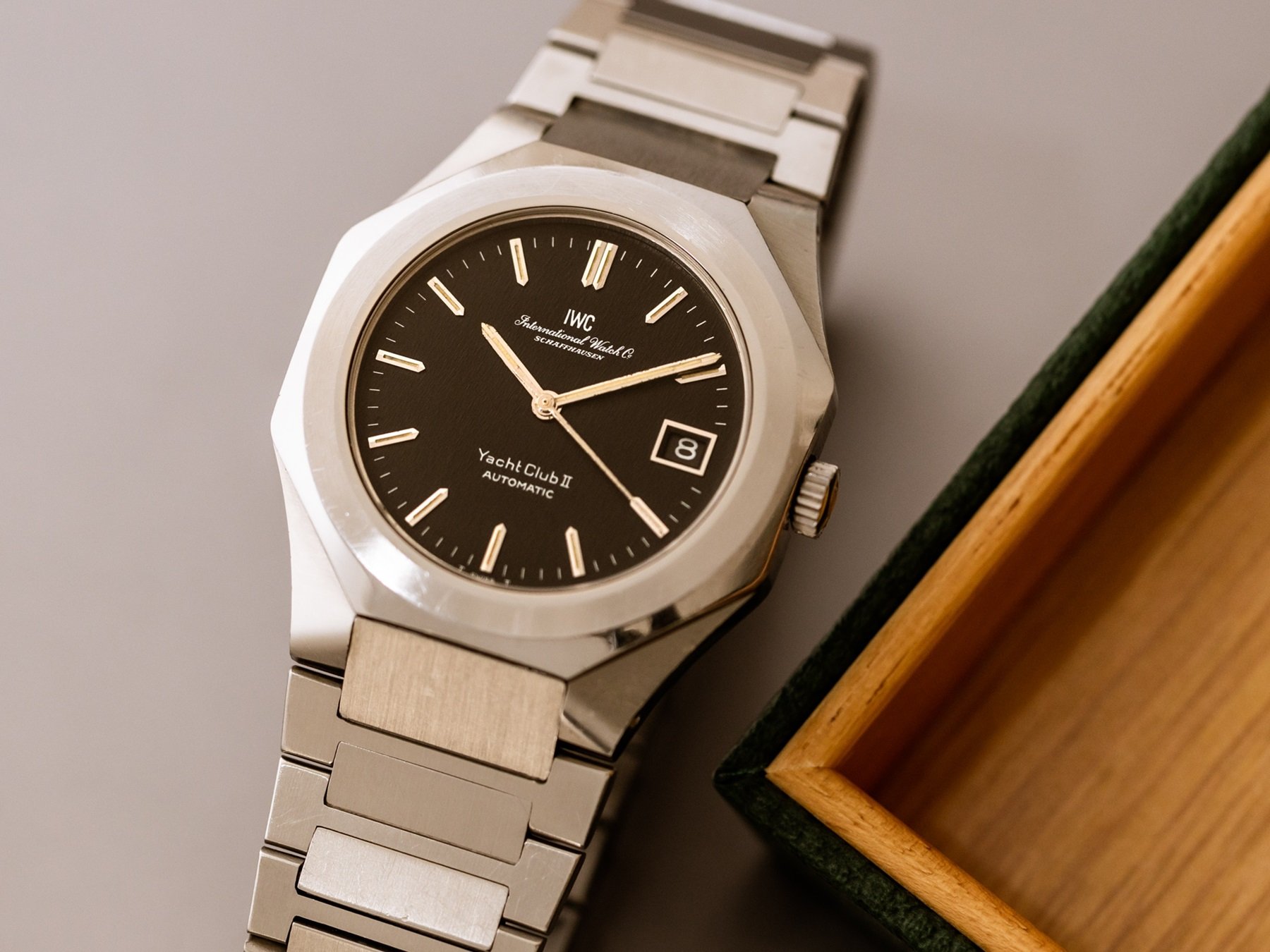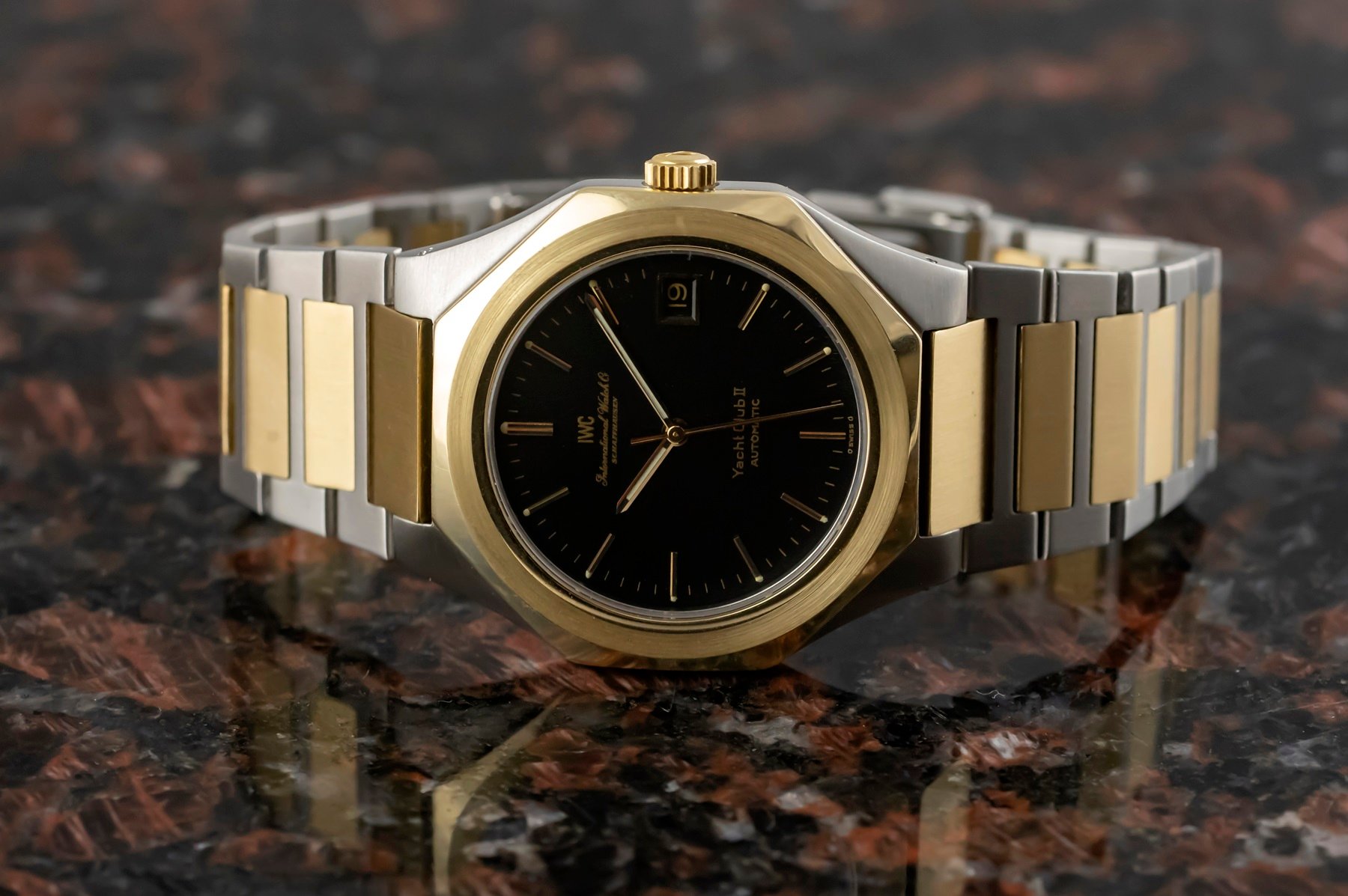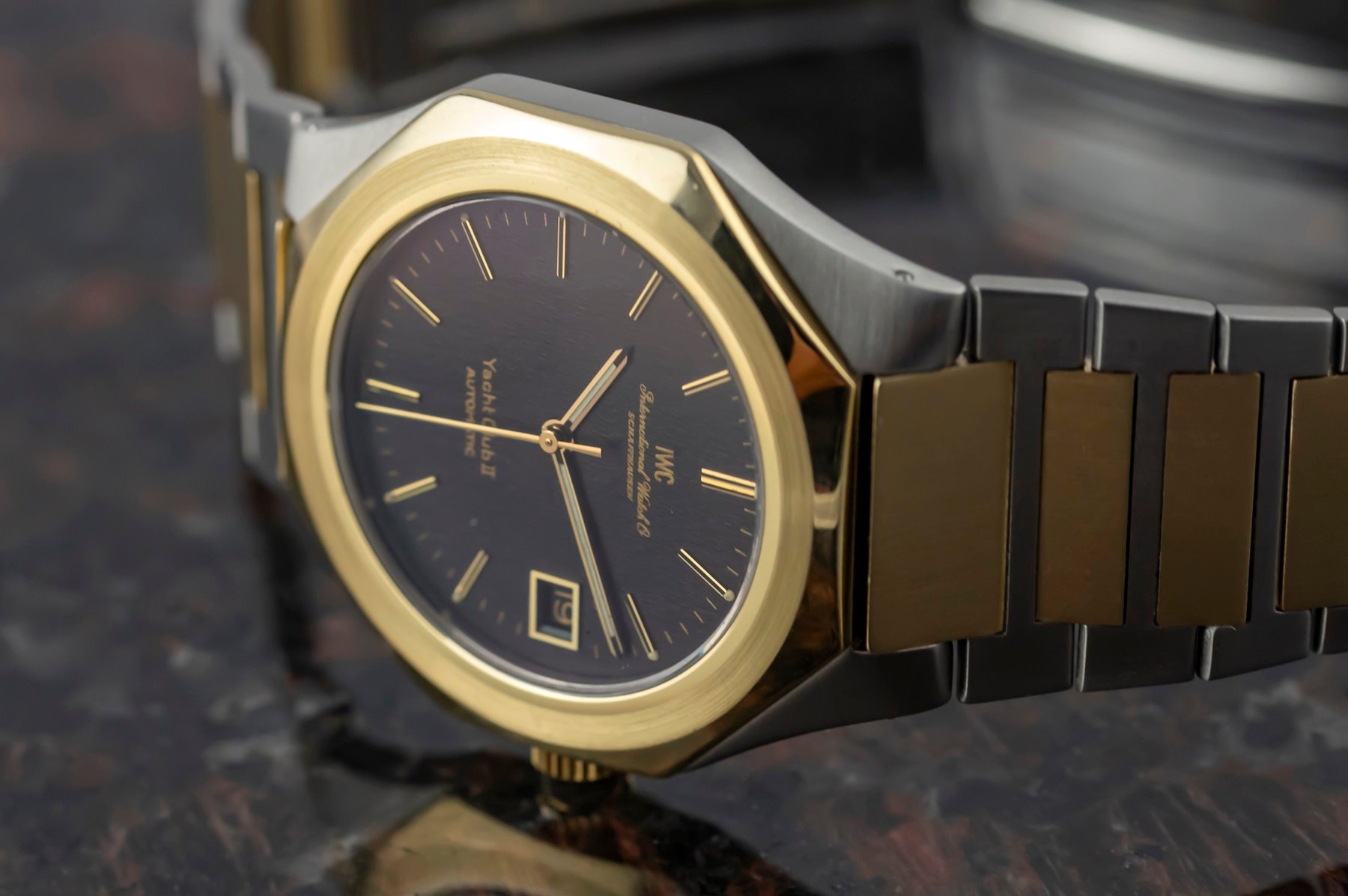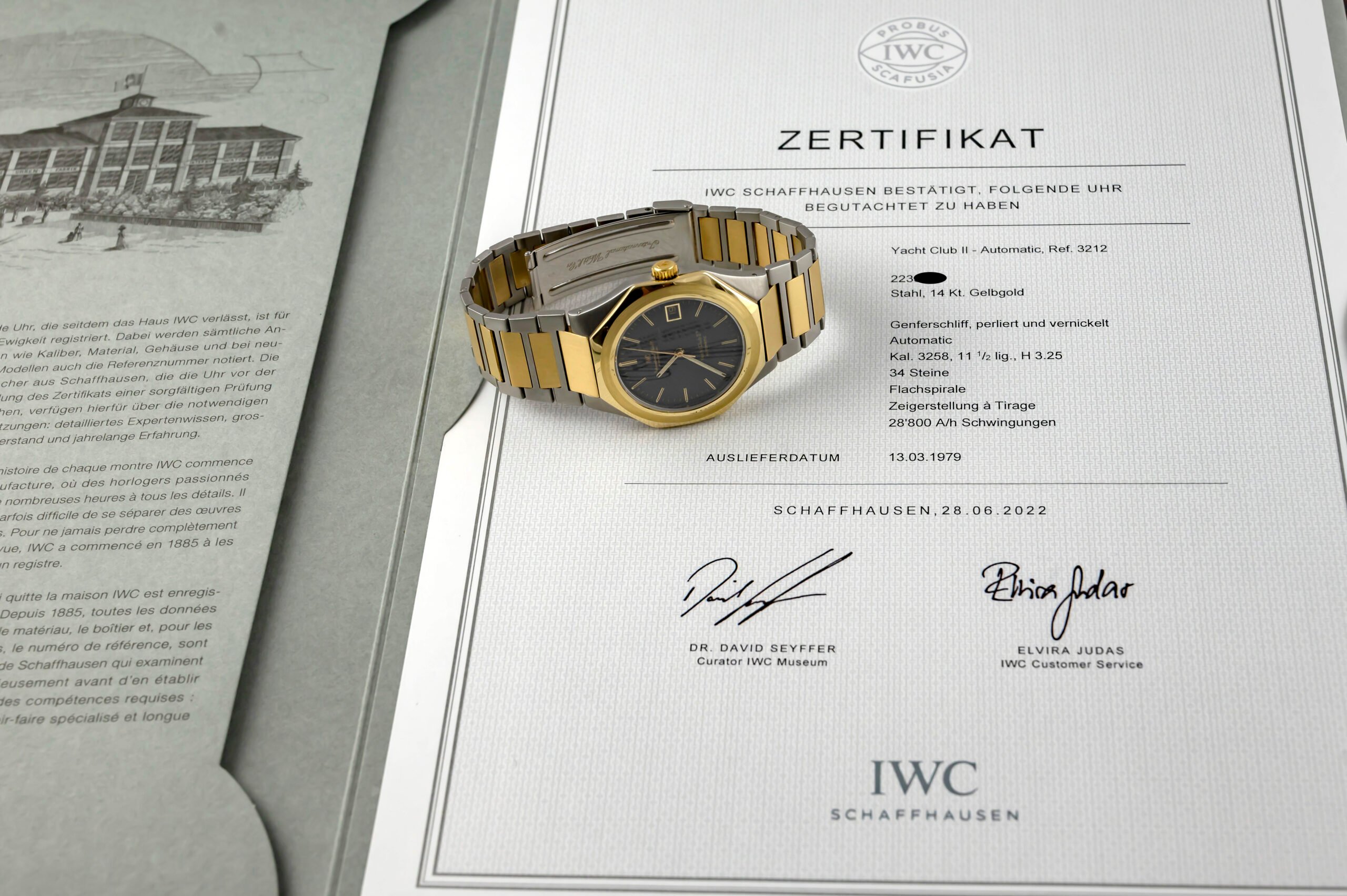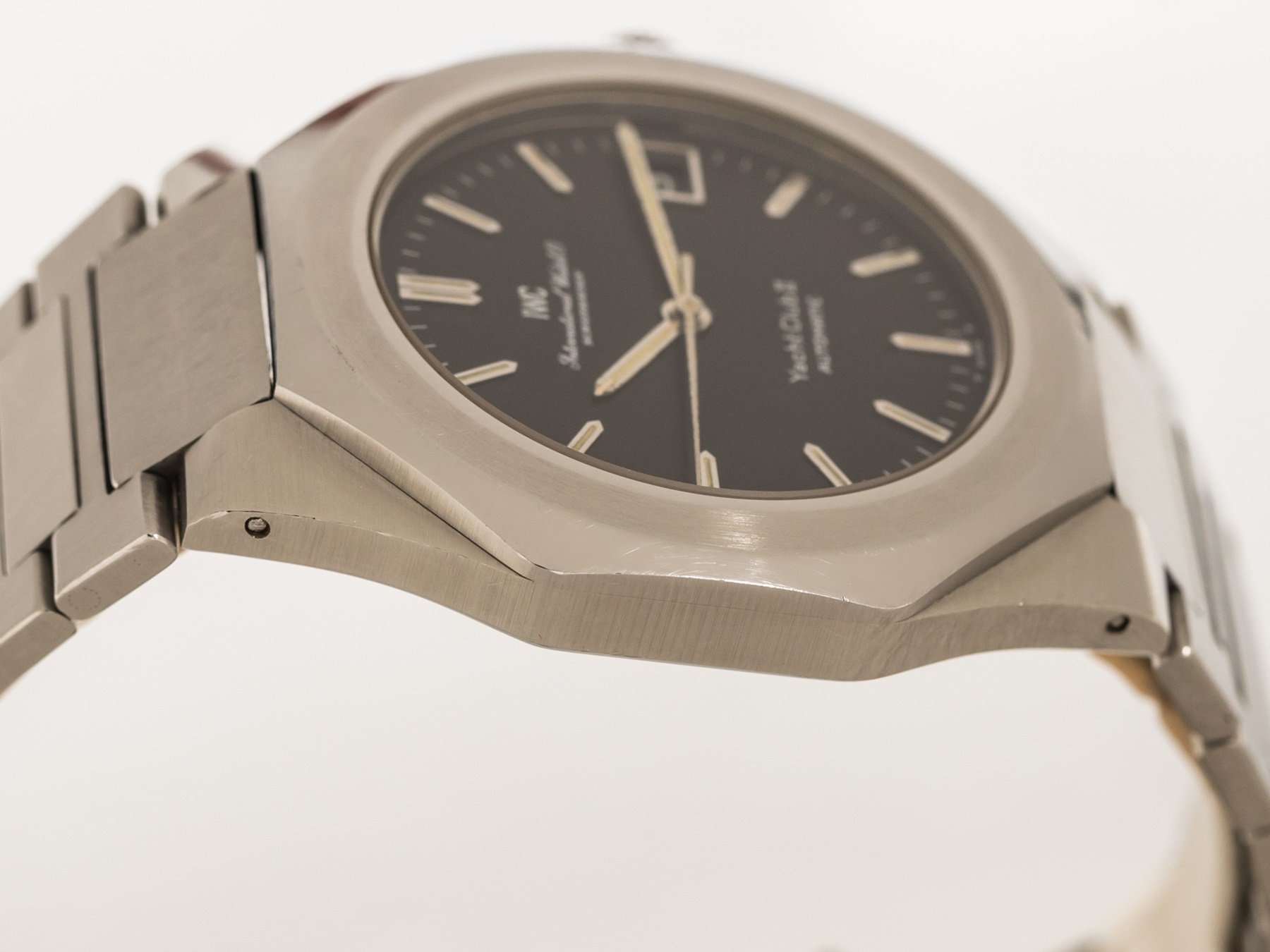The IWC Yacht Club II Ref. 3212 Is A Genta Design I Would Like To See Reborn
Last year, the IWC Ingenieur returned. The original Gérald Genta design got reworked and, when launched in steel and titanium, proved an alternative to the (un)available Royal Oak and Nautilus, the most iconic of Genta-penciled watches. A recent visit to IWC’s museum in Schaffhausen, on the banks of the river Rhine, sparked a couple of eureka moments. The first one happened when I laid my eyes on the IWC Yacht Club II ref. 3212 in the showcase. The second came a bit later. I will elaborate on that second moment of clarity, but first, let’s focus on a Genta design that, in my humble opinion, stood the test of time way better than others.
What were your thoughts when you saw Credor’s Genta-designed Locomotive come back to life recently? Did that €14,000 watch make it difficult to choose between it and the also-Genta-designed and similarly priced IWC Ingenieur? Or did you instantly reject it as some of our readers did in the comments below the introduction article? Calling it “a derailed design” was rather funny, I thought. Anyway, we are living in a watch world where everything Gérald Genta touched gets a chance to be revived or remolded. There’s the Gerald Charles Masterlink, for instance, and last week, the LVMH-owned Gérald Genta brand launched a new version of the Gentissima Oursin, the 1994 watch inspired by sea urchins. So why should IWC also bring back the Yacht Club II ref. 3212? Wouldn’t that be Genta overkill?
The missing Genta link is the IWC Yacht Club II ref. 3212
IWC brought the Yacht Club watch to market in 1967. Because of its broad, flared lugs, the 36mm watch had a distinct look, but at the same time, the dial with its stick markers was quite straightforward and sober. It proved a winning combination because the Yacht Club became IWC’s best-selling model in the late 1960s and early 1970s. But it’s not this commercial success that I’d like to see return to the IWC catalog. It’s the Yacht Club II ref. 3212 that debuted in 1977.
Actually, there were two versions of the watch — reference 3212 with a bracelet and 3211 with a strap. The watch in the IWC museum has a leather strap, but the sign reads “Ref. 3212” despite it being a 3211. That’s no biggie, though, because it made me think of re-releasing the two historical references as one new one; the practicality of quick-change straps comes into play here.
Quartz or automatic?
The Yacht Club II came just one year after the launch of the Genta-designed Ingenieur SL ref. 1832. The Ingenieur was the flagship watch in IWC’s SL collection. “SL” stood for “steel,” and the collection comprised several luxury sports watches with steel cases and bracelets. The Yacht Club II with its octagonal and beveled bezel and swooped case shape perfectly fit the zeitgeist. But the JLC 900-based automatic caliber 3254 that powered it didn’t. The Quartz Crisis raged, and IWC started to outfit later Yacht Club II watches with quartz movements. A re-edition with updated tolerances, finishing, and materials with a quartz movement is out of the question, of course. A future version must have a mechanical caliber.
After being in production for about a decade, the Yacht Club II was discontinued. There are five Yacht Club references in the current IWC collection, but these watches are part of the Portugieser family. They have little to do with the original Yacht Club and absolutely nothing in common with the edgy Yacht Club II.
Steel only or two-tone as well?
The Yacht Club II in the museum has the 40mm “Jumbo” case, and that size is spot on in this day and age. IWC’s current versions of the Ingenieur also have a 40mm case in steel or titanium. The 10.8mm thickness befits a luxury sports watch with an automatic caliber and a central rotor. Yes, a sub-10mm thickness would have been even more desirable. In the article “High-End Integrated-Bracelet Sports Watches Deserve To Be Slim,” I wrote that when a watch is “over €10K, it must be less than 10mm thick.” I still stand by that statement, so, if IWC decides to bring back the Yacht Club II, it should be at least 0.9mm thinner than the revamped Ingenieur, which costs €12,900 in steel and €16,100 in titanium.
Will IWC’s caliber 32111 fit into a case measuring less than 10mm thick? That’s a question only the brand’s engineers can answer. This 120-hour-power-reserve movement seems to be the most appropriate caliber for another Genta design brought back to life. A more difficult matter is what materials to use for the case and bracelet. A full-steel version is obvious. The titanium used for the “Ingenieur 2.0” isn’t so much. A two-tone version, however, would be very appropriate. IWC produced the Yacht Club II in a mixture of steel and gold as well.
The Yacht Club II 2.0 is two watches in one
Apart from stating my preferred materials for the case and bracelet, I won’t go into too much detail. I trust IWC’s Head of Design Christian Knoop and his team to get it right. So I will not write to avoid using beige Super-LumiNova to mimic discolored tritium on the stick indexes, etc (oops, I guess I did). But I do need to emphasize that the updated Yacht Club II should merge references 3211 and 3212 from the start.
In other words, I envision a Yacht Club II that comes with a leather strap and a bracelet. And thanks to IWC’s EasX-CHANGE system, the owner should be able to swap the sporty integrated bracelet for a more dressy look with leather just like that. In my opinion, this Genta design works best on leather.
A watch family of oddballs
My visit to the IWC museum didn’t just spark my interest in the Yacht Club II. It also got me thinking about a completely new IWC watch family. As you know, the reintroduced Ingenieur isn’t part of a family. It stands alone. That’s good. It means you will probably never see an Ingenieur perpetual calendar with a double moonphase indicator. But the Ingenieur could also mark the start of a collection of specific watches with something else in common other than their looks. The element that binds these watches is historical significance.
A reference I believe would be perfect for such a collection is the 1986 Da Vinci Perpetual Calendar ref. 3755 in black or white ceramic. These were the first wristwatches made of high-tech ceramic zirconium oxide. Another candidate is the 1998 GST Aquatimer ref. 3536. Forget about creating a whole string of new Aquatimer variants. Stick to one model that captures the essence of that dive watch, and be done with it. By creating the Historic family, IWC would have the freedom to recreate significant watches from the past without the stress of devising a consistent watch collection pivoting around a single watch.
Does the Yacht Club II also intrigue you?
Please tell me that despite the plethora of Genta revivals, a reinterpreted version of the IWC Yacht Club II ref. 3212 also intrigues you. And if it doesn’t, I also want to read about it. Suggestions are, of course, also welcome. I will pass everything on to IWC; you can be sure of that. And if you can’t wait any longer for a possible revival of the Yacht Club II, you can look at Chrono24 to find out what you must pay for a vintage 3212.
Featured image: Nobeluhren

